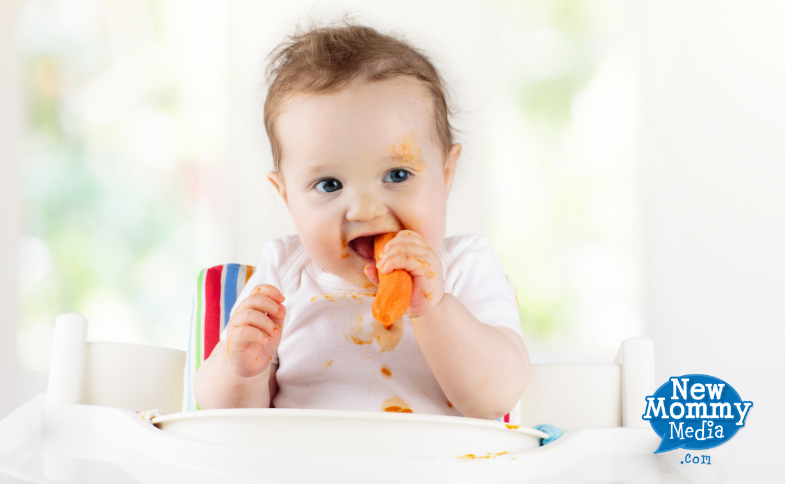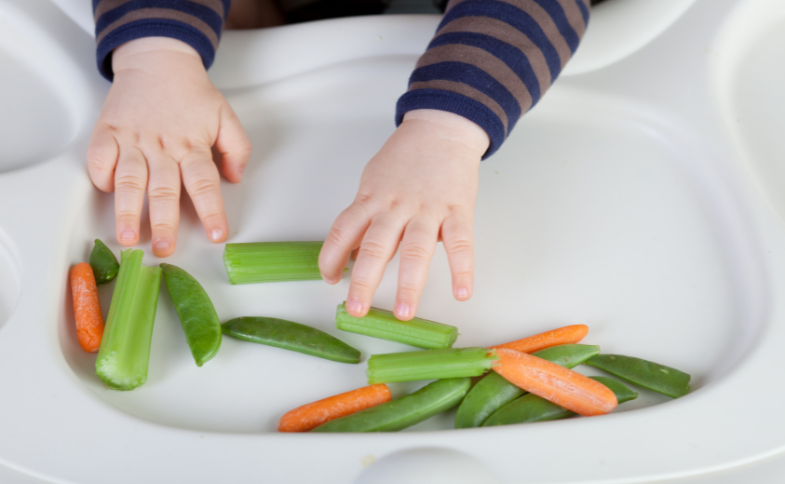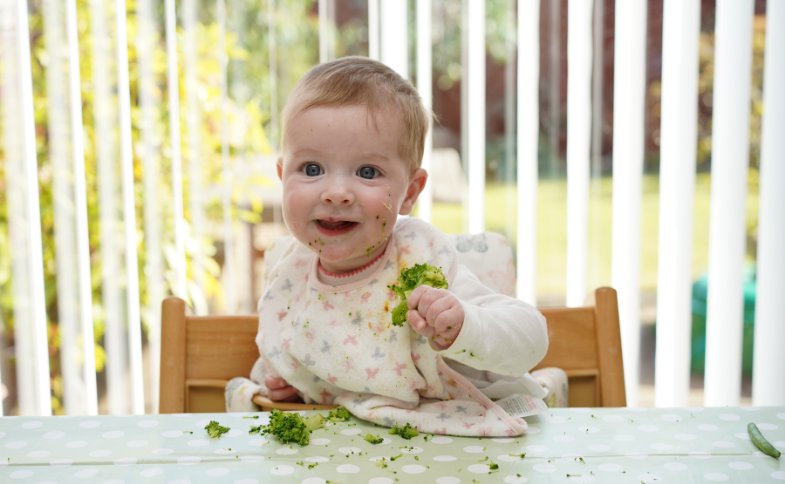Baby-Led Weaning: Introducing Solid Foods to Infants

Have you been thinking about weaning your baby? Congratulations! This is a huge milestone in your little one’s life and you should be extremely proud!
You’ve probably heard about baby-led weaning. It is a method of starting solids that lets babies jump straight to solids, skipping purees and mashed food. A lot of parents love it because it allows their little ones to choose what and how much they want to eat.
It is important to note that baby-led weaning only works for babies who are old enough to self-feed. This is why pediatricians and dietitians recommend that you only introduce it after your little one turns 6 months old.
Here is everything you need to start baby-led weaning.
Why choose baby-led weaning?
Baby-led weaning is great because it gives babies some control over their diets. It also helps them start to learn how to chew their own food while preventing parents from overfeeding or force-feeding their little ones.
Here are some other benefits of letting your baby lead when weaning first foods:
Benefits of baby-led weaning
- It introduces babies to a wider range of food textures and flavors. This in turn allows them to develop a healthier range of food preferences.
- Because it introduces babies to a wide range of food groups, studies have shown that it can help prevent food allergies later in life.
- Because babies are in control of how much food they eat, it reduces the risk of obesity in children.
- It is important for the development of hand-eye coordination and gross and fine motor skills that come with self-feeding.
Disadvantages of baby-led weaning
On the flip side, there are also several downsides to this feeding method. Here are some of them:
- It is messy. You’ll probably have to do a bit of prep work before meals and lots of cleanups after.
- Babies who are strictly fed finger foods may lack iron in their diets. Foods that are rich in iron such as beef are difficult to turn into finger foods. A workaround for this is to supplement finger foods with iron-rich purees such as pureed meat and vegetables.
When to start baby-led weaning
The best time to start your baby on solid foods is when your baby turns 6 months old. Consider making this week 1 of baby-led weaning.
By 6 months, your baby will be able to sit up and grab objects by herself. Babies are also born with a tongue-thrust reflex that allows them to push things out of their mouths. They usually lose this reflex at around this age, making it the perfect time to start them on solids.
Additionally, their digestive tracts have developed well enough to digest and absorb solid foods by the age of 6 months.

How to start baby-led weaning
Before starting baby-led weaning, you need to make sure that your baby is ready for it. First, she needs to be at least 6 months old. She also needs to be able to grasp and hold things firmly in her hands without your help.
Here is how to start baby-led weaning:
- Keep breastfeeding or bottle-feeding your little one.
Do not change your feeding schedule. Your baby will still be getting most of her nutritional needs from breast milk or formula for at least another 6 months.
- Offer solids at mealtimes
It is up to your little one to decide if she is interested. Just stick to your regular feeding schedule and think of the solids as playing a supplementary role in your baby’s diet.
- Keep the food soft
As you start, the most important thing should be that the food is easy enough for your baby to guy and swallow. Foods that you can smush with one finger and foods that can dissolve are great for this. Avoid hard or crunchy foods like carrots and apple slices.
- The food should be age-appropriate
Early on (6-8 months) the finger foods should be long and thick. This will allow your baby to hold and chew it. By month 9, she will be able to pick up bite-sized foods with her fingers. You can now make the switch to this format.
- Eat together
Eating with your baby allows her to mimic you and learn how it’s done right by copying you. If she wants a taste of your food, as long as it is age-appropriate, you can let her have some.
- Make things interesting with a variety of foods
Roll out the food gradually. Eventually, you can start offering your baby choices. This will turn her into less of a picky eater as she grows up. Try offering foods of different colors and textures for every meal.
Keep in mind that as you start baby-led weaning, you need to keep your baby’s nutritional needs in mind. Since iron is one of the toughest nutrients to incorporate, always offer iron-rich foods with every meal.

Baby-led weaning safety tips
- Know the signs of choking in babies
Choking is not the same as gagging. Gagging is a natural reaction that will pass on its own. Your baby may cough mildly or make a noise before forcing the food back up. On the other hand, choking is more serious. Your baby may look terrified and unable to breathe, and she may gasp for air or make a wheezing sound. She may also start turning up bluish color and grab her throat.
- Don’t serve foods that are potential choking hazards
When weaning first foods, stay away from foods like nuts, small fruits like grapes and cherries, raw veggies, raw apple slices, dried fruit, thick scoops of peanut butter, chunks of beef, hot dogs, popcorn, sausages, fish with bones, crunchy snacks, granola bars, among other similar foods.
- Your baby should only eat under your supervision
Never let her eat unattended. Sit her upright in her chair and don’t let her eat while crying, playing, or crawling. Also don’t feed her while distracted like in the car or the stroller.
- Keep an eye out for allergic reactions
Offer allergenic foods from an early age. However, keep an eye out for any reactions your baby may have. If you notice anything, talk to your pediatrician about it.
- Make sure all your child’s caregivers follow the same safety precautions
You can achieve this by explaining baby-led weaning to them and ensuring they follow all the precautions when doing it.
Final thoughts
Watch your little one and she will let you know where she wants to be in her weaning journey. This will inform you whether or not she is ready for baby-led weaning. Keep in mind that while baby-led weaning is a popular feeding method that has been gaining traction in the last few years, pediatricians recommend traditionally starting solid foods through spoon-feeding. Therefore, if you have any doubts, you should talk to your pediatrician first.